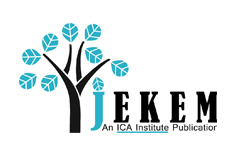Abstract
Since members of the Association of Southeast Asian Nations (ASEAN) signed the ASEAN Free Trade Area agreement in 1992, trade between Singapore and Malaysia has continued to grow. Historically the economies of these two countries have had different characteristics, however, with Singapore known as a capital abundant country and a world financial center, while Malaysia has traditionally been relatively labor abundant and capital scarce. Because of this sharp contrast in their economies, one would expect that testing the Heckscher-Ohlin Theorem using trade data between Singapore and Malaysia would provide stark evidence of the H-O Theorem. That is to say that rather than find an exceptional case, as some past studies have done, this paper has attempted to find a country pair that seems to most closely resemble an idealized trade environment for the H-O Theorem. Thus, should a test find that the key hypotheses of the theory--namely that capital abundant countries export capital intensive goods, and labor abundant countries export labor intensive goods--are not evidenced in the data, then a serious re-evaluation of the theory may be necessary.
The paper will first review past tests of the Heckscher-Ohlin Theorem to determine what relevant studies have been done to date. Following that, export data will be reviewed for several different sectors, dividing them up as either capital intensive or labor intensive. What we would expect is that Singapore is exporting capital intensive goods to Malaysia, and Malaysia is exporting labor intensive goods to Singapore. Further, labor intensive exports will be analyzed as a proportion of capital intensive exports to determine how the labor/capital export ratio compares to the labor/capital abundance ratio for each country.
DOI
10.7885/1946-651X.1009
